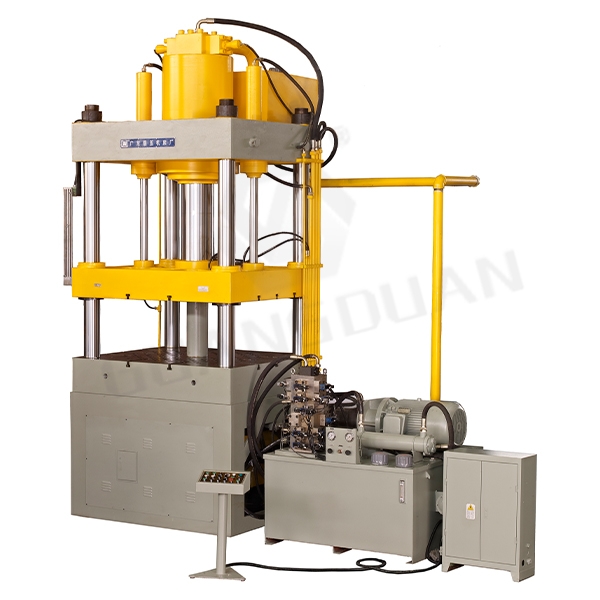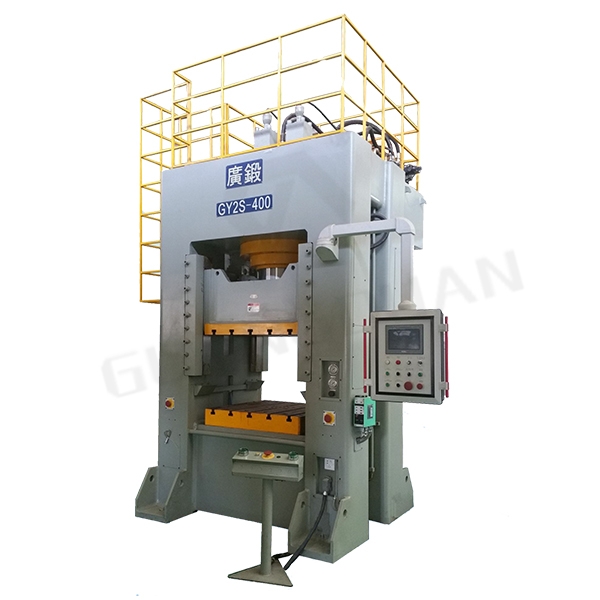
How does a Hydraulic Press Machine Work?
An Explanation of How a Hydraulic Press Works.
One of the workhorses of the industrial and manufacturing sector is an apparatus known as a hydraulic press. Although its usefulness and benefits are well-known, only a small percentage of people have a complete understanding of the core concept of how it operates. The operation of a hydraulic press is described here. This piece will begin by defining what a hydraulic press is before proceeding to describe the basic principles that control how it works.how hydraulic press machine works.

Two pieces of material are compressed into one another using the force provided by pressurized fluids in hydraulic presses. When a fluid is compressed so that it can pass through a space that is much narrower, the pressure on the other side of the item increases. After that, the force is distributed along the item, and it is finally released at the opposite end.
What Exactly is the Deal with Hydraulic Presses, anyway?
Let’s take a deeper look at how the hydraulic press machine works. A hydraulic press makes use of pressurized fluids in order to provide the force required to compress together the items being processed. Inside that space, you’ll find a pump, two endplates, and a piston.
Pressing things is what the hydraulic press is used for. The hydraulic pump is the most important component of the system since it injects oil under high pressure into the cylinder. A metal ram or piston is located in the opposite cylinder, and the oil is forced to push against it. The pressing operation is now complete because of the massive amount of pressure that this applies to the plate.

What Is The Secret Behind The Efficiency Of Hydraulic Presses?
Hydraulic presses get their power from pumps that run on hydraulic fluid. After the pump has been activated, the oil will be fed into the system, which will ultimately lead to the development of pressure.
The pressurized oil is then channeled through a system of valves and pistons, which results in an increase in the user’s force that is anywhere from five to twenty times greater. It has a larger cylinder.
After that, the press will apply that force to the workpiece by making use of a ram or piston. Because the press machine uses levers and other mechanical devices to multiply the force applied by the operator, pressing is much simplified as a result.
The First and Most Important Rule In Hydraulics
Pascal’s law, the fundamental concept of hydraulics, stipulates that the pressure within a contained fluid remains constant regardless of the size of the container. This Pascal’s principle was named after the French scientist who first stated it.
Reasons Why Oil and Water Are Used in Hydraulics
Oil and water are the two liquids that are most frequently recommended for use in a hydraulic press, and there are a few reasons for this:
· They are both incapable of being compressed, which means that they can be squished through small openings without suffering any loss in volume.
· Oil is superior to other mediums in terms of the strength it possesses as a medium for the transmission of force.
· Because of its high viscosity, oil distributes a force across a surface in a manner that is both uniform and smooth.
The higher boiling point of oil makes it a popular alternative to water in many applications. One of the most appealing qualities of water as hydraulic fluid is that it does not freeze, but because it has a lower boiling point than other fluids, it has the potential to boil within the cylinders. To further corrode the cylinders, you can boil water inside of them. This is the second method.
Pascal’s Law and Hydraulic Press Machines
Pascal’s Law states that the amount of pressure that is applied to a contained fluid (such as oil) remains constant no matter where it is located within the container.
Pascal’s theory holds that pressure can be defined as the amount of force that is exerted across a specific region. Because this pressure is constant throughout the hydraulic fluid, the amount of force that is applied is proportional to the size of the passageway that the fluid is required to pass through. In order to keep the same pressure, there must be a tenfold increase in the amount of force applied whenever there is a tenfold increase in the amount of area.
How Does Pascal’s Law Work Within the Field of Hydraulics?
Pascal’s Law asserts that increasing the pressure at one spot in a hydraulic press induces a similar increase in pressure at all other locations in the press. Since there is no longer any power loss, the machine can be utilized on a more manageable scale with increased effectiveness.
Pascal’s idea has the additional benefit of assisting with precision pressing. This is accomplished by decreasing the amount of force that is required of the user, which in turn increases the input’s precision. If the operator exerts a consistent level of force, the device will distribute it in a manner that is both even and effective.
Hydraulic Press: An Explanation of Its Use
After gaining an understanding of the components that go into the working of a hydraulic press, the next step is to become familiar with its operation. A hydraulic press that is in working order is an absolute requirement.
1- Figure Out The Material You Want to Press
Compressing a wide variety of materials—from pliable rubber sheets to rigid metal plates, for example—can be accomplished with the help of a hydraulic press. Make sure that the amount of pressure that is applied to the material is matched exactly.
Check to see that the thing you wish to press is not too big for the hands you have available to you. Avoid pressing anything that is overly huge or heavy because doing so may result in personal injury or damage to the equipment used in the hydraulic press.
2- Put the Materials in the Right Order Between the Pressing Plates
The following step is to place the material of your choosing between the two pressing plates in such a way that it does not damage the edges in any way. If there was a tear on either side of the pressing plate, the form or shape of the material you were using could be completely damaged.
It makes no difference which plate the substance begins on because it will eventually cover both of them regardless of where it begins. It is OK for its length to be offset from both pressing plates as long as this condition is met.
3- To modify the Limit Switch as needed, make the necessary modifications.
Make sure that the limit switch is in the correct position before beginning to operate the hydraulic press. When you do this, you lessen the likelihood of destroying your material, bringing down your equipment, and putting your employees in harm’s way.how hydraulic press machine works.
There are numerous approaches to regulating the limit switch that is utilized by hydraulic press machines.
4- After you have finished putting the material through, lock the door for safety.
The pressing procedure can start as soon as the hydraulics are in working order, the material is situated appropriately between the pressing plates, and the limit switch has been adjusted.
After you have closed the safety door, the first thing you will need to do is activate the hydraulic press machine. After that, start applying force by adjusting the amount of oil that is flowing into the hydraulic pump. Again, the size and makeup of the material you are working with will determine how much pressure is appropriate to use on it.
5- Take a look at the freshly pressed goods.
Examine the end result to check that everything was executed as expected before declaring success. If there is a problem, you need to go back and redo steps 1-5, but this time you need to adjust the pressure so that it is applied consistently and there are no tears or fractures in the material. If there is a problem, you need to go back and redo steps 1-5.
Concluding:
How exactly does one go about using a hydraulic press? Pascal’s premise is used repeatedly during the process of a hydraulic press’s operation. Every other piston will feel the force that is being imparted to the first one. When the succeeding pistons are of a larger size, users are able to press materials with less effort, which saves time and money.how hydraulic press machine works.
The actual operation of a hydraulic press is not nearly as complicated as the explanation of how it works, which may be fairly involved. You too can accomplish this goal if you carefully adhere to the operating and safety guidelines provided by GUANGDUAN after you purchase the Hydraulic Press Machine offered by us.
CONTACT US


Guangdong Metal Forming Machine Works Co., Ltd.
We are always providing our customers with reliable products and considerate services.
If you would like to keep touch with us directly, please go to contact us



